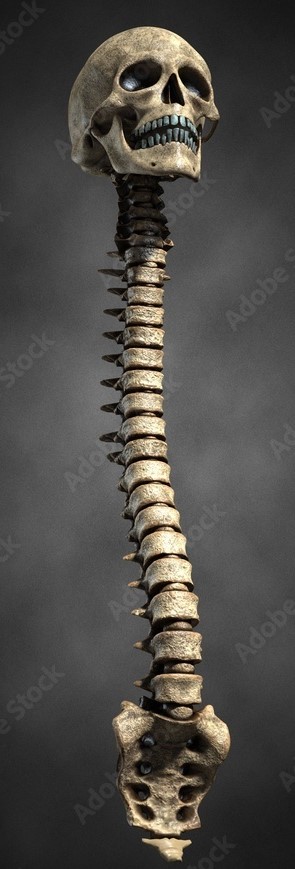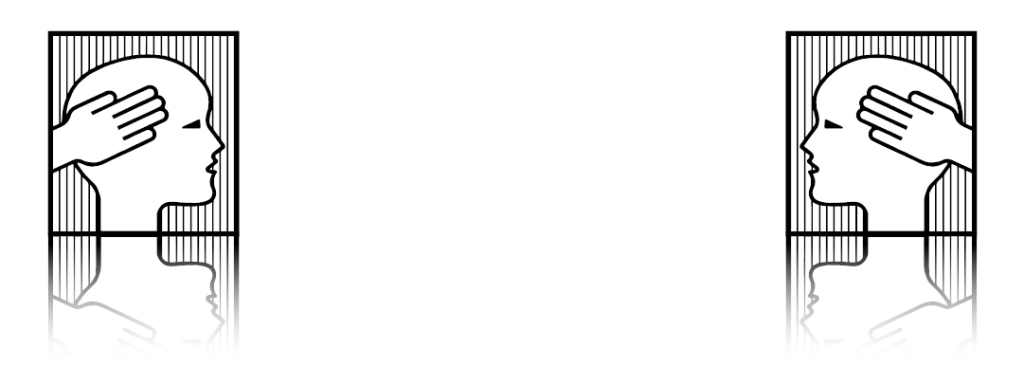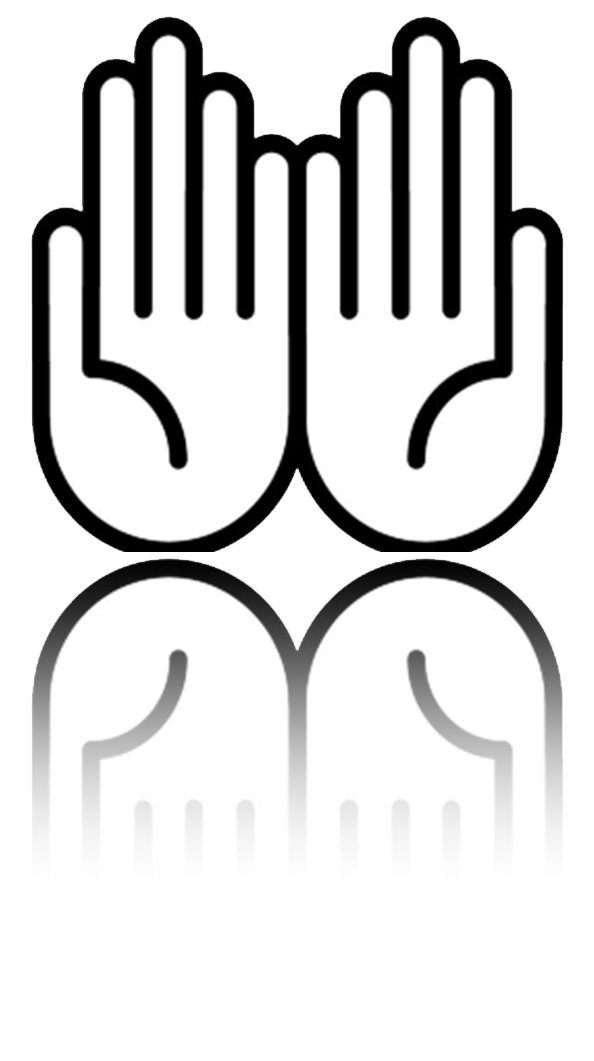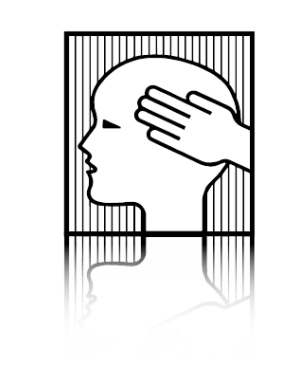Serendipity and Providence | 1981

“What did you just do with my back?”
I asked my PT, sitting on her treatment table.
She told me she was learning interesting
palpatory techniques with a cranial Osteopath.
And thus she came to explain the osteopathic perspective of
palatal motion, motion across the midline of the palate.
Instantaneously, I knew this was significant for me.
Intuitively, I knew she had spoken my Truth.
I excitedly left her office with the name and phone number of the osteopath.
Hallelujah
Leonard Cohen
2Cellos
This moment in 1981 changed my direction.
I placed my first footsteps onto the
“Road Less Traveled”.
A Different Perspective

Standing behind me, she was gently moving my upper torso. I had instantly recognized that she was working very differently with my body than in previous treatments. The Osteopath had taught her how to move a patient’s body so that the body did the adjustment rather than the practitioner. I was amazed.
The physical therapist was well aware of my ‘new’ dental splint.
After many phone consults, I had a referral to a dentist who had worked with TMD for twenty years.
He fashioned a splint from hard acrylic – no soft malleable material in my case – to guarantee no movement.
This TMD dental specialist’s perspective was to stabilize the occlusion
that would in turn facilitate healing the temporomandibular joint.
In addition, gold was used for the prongs that snapped on my teeth to future insure inflexibility.
She then proceeded to explain the osteopathic perspective of
motion across the midline of the palate:
“Some people are unable to tolerate a dental appliance, a bridge or braces on the upper teeth
due to the effect of restricted motion at the midline of the palate.”
As she was explaining this oral perspective, my ears were reverberating with
“MY SPINAL FUSION.”
I intuitively knew this ‘lack of motion’, between ‘HEAD and BACK’,
was critical for me.



The Osteopath and The Dentist
Initial Visit
Cranial Osteopathy
and dentistry are interconnected
in treating teeth, jaw,
face and mouth problems.
Abnormal bites, jaw position (TMJ dysfunction), restriction of motion in the palate, the relationship of the jaw with the head, etc. can lock strain patterns into the head. This dysfunction can precipitate neurological, musculoskeletal,
and circulatory problems throughout the body.
Intra-oral treatment by a cranial Osteopath can alleviate or help manage pain as well as
improve function.
Both the physical therapist and my new dentist referred me to the cranial Osteopath. My first appointment was February 12, 1981 – two days after my 34th birthday.
My bodywork experiences besides physical therapy consisted of chiropractic and Jin Shin Jytusu. The chiropractic high-velocity thrust adjustment to my neck was foremost in my mind as I arrived for my appointment. My lower jaw had been pulled forward into a Class III malocclusion with a dental splint. Immediate pain and flashing electric impulses flooded though the left side of my head as I drove home. I had never returned to this trusted man who was instrumental after my failed spinal fusion had left me debilitated with pain. I was too frightened.
Great Anxiety rippling through my head, a dental splint in my mouth, a spinal fusion at L5-S1 and Nardil and Valium in my stomach…all accompanied me to this initial visit.
After the preliminary history uptake, I was surprised by the osteopath’s request: “Please remove that splint; I can’t treat you with that in your mouth.” I didn’t do anything except eat and brush my teeth without the dental appliance!
Great Anxiety tripled! I vehemently stated that I wanted to leave it in my mouth. A back-and-forth conversation ensued before I begrudgingly placed the appliance on a table. I was scared and felt completely naked once I removed the appliance and opened my mouth.
That very morning, I had reclined in a dental chair for over an hour with my mouth open, tap-tap-tapping my teeth on carbon paper and listening to the whirr of the dental drill as my occlusion was meticulously adjusted.
During the initial workup, I was speechless when the osteopath asked me why the bone graft for my spinal fusion was taken from the symptomatic left leg rather than the right side. When he further stated that my back had been fused one inch too anterior, I was visibly upset: “What are you even able to do with this kind of mess?” I cried. And he calmly stated that he would be able to help my body function better within this adaptation.
I then voiced my concern over the chiropractic experience; he reassured me he would not be doing gross manipulation, only light touch. That was an understatement. His touch was so light, I wondered if he was doing anything at all!
“Good grief…what in the world am I doing now?!” My thoughts were swirling, laughing at myself one minute and feeling foolish the next. My skepticism soared as the treatment progressed. I was equally shocked when, out-of-the-blue, he commented, “You don’t have to believe in this to have it work.”
However, even stranger things were about to materialize. When the treatment was finished, I was astonished that I was unable to snap the appliance over my teeth. The hard acrylic splint with gold prongs was inflexible, unlike a plastic appliance that was malleable and could handle small changes. This initial visit was the first of many ‘drill-less’ occlusal adjustments.
What had happened while I lay on his treatment table feeling nothing? I was keenly aware of occlusion at this point. It was quite apparent that a radical change in my mouth had transpired – within two hours after a dental adjustment… and by a doctor who seemed to be doing absolutely nothing! He suggested that I should have the splint readjusted. The dentist was speechless when I recounted the details of my osteopathic adventure.
“Hard-core acrylic proof” that change had occurred
despite my skepticism and my ‘feeling nothing’.
Precisely what I needed
to gain confidence in the cranial Osteopath.
Simultaneous astonishment, bewilderment and awe left me with 1001 questions.
I scheduled a second appointment,
totally unaware that this path into the Unknown
had led me into a different world of medicine
where structure governs function, and
self-regulation of the body is honored and facilitated.
Follow Up
My life was a circus of osteopathic treatment first and splint equilibration second. Within one month, communication between the osteopath and the dentist resulted in splitting the dental splint down the midline so the two halves of my palate had freedom to move. Dental equilibration visits after osteopathic treatments lasted for one month. On April 7, 1981, my palate had expanded too much for the appliance to fit on my upper (maxillary) teeth. My entire body screamed through this process of rapid change with pain ricocheting into my fusion and reverberating back up into my head.
This “yo-yo pain” phenomenon had been my previous experience with the dental splits, winding me tighter and tighter and crippling my body not to mention my mind and spirit. I vividly remember it took three weeks for an occlusal adjustment to affect my lower back and legs. I had no understanding of why this was happening; I had
been very scared that something was wrong with my body. And the dentists had been of no help or guidance.
The dismissal from three dental offices due to my bizarre reactions speaks for itself. The ‘professionals’, these ‘voices of authority’, were uncomfortable with my abnormal response to treatment. A challenge to their expertise was unacceptable. Dismissal and shaming removed their sense of helplessness.
At this time, I still assumed the role of ‘victim’ and these words of ‘authority’ crushed me, even thought I retorted that I had psychiatric help in order to deal with the dentist.
DENTAL APOLOGY
In 1999, I traveled to Florida
for a consultation with a dentist
who was the creator of the dental
CPT codes for temporomandibular
joint dysfunction.
After hearing my history,
he apologized for his
profession’s mismanagement
of my case.
He explained that the dental splint pulling my mandible forward, creating a Class III malocclusion
to ‘recapture the TM disc’, had,
in essence, placed me in a
24-hour whiplash position
in conjunction with a traumatic high-velocity thrust maneuver
by my chiropractor.
By 1999, this TMJ procedure
had been discontinued
My current ‘experienced’ dentist informed me was unable to work with me based on the rapid change that was occurring with the appliance ‘unstable’ because of the split at the midline. The amazing ability of the Osteopath to pinpoint the location of pain without my telling him ‘where’ or describing ‘what’, together with the profound states of relaxation that would flow through my entire body during treatment equipped me with a gut-instinct – a Knowing – that guided my decision making in not returning to the dentist.
My only regret is throwing the dental splint, which included the gold prongs, into the trash!
Iatrogenesis and Radical Optimism
Today, I know there is a medical term describing what happened
within the local dental community as well as with the previous intubation injury and awareness experience:
IATROGENESIS
harm brought forth by unintended adverse patient outcome because of a health care intervention.
A non-medical definition is “the silent assault of the body, mind and spirit.”
In 1999, much less in 1981, I was oblivious to this perspective of what had happened.
‘Unintentionality’ and ‘Silence’ coalesce into a powerful armor of defense and denial within a person,
penetrating not only deep into the psyche and the body but also into the Soul.
Recognition of this form of traumatic event(s), discovering a label,
and traveling down the road of ‘forgetting in spite of remembering’
is a lifetime of soul-searching growth.
An unconscious part of me learned from this dental nightmare
and sustained me with a ‘wondering sense’,
a wondering if this could be an ‘undoing’, an ‘unwinding
…a reversal of what had been unintentionally done to me
in the name of dentistry, anesthesiology, and otolaryngology.
Is ‘wondering’ the genesis of Radical Optimism?
Remembering and reflecting on these happenings so many years ago,
I would now vehemently say ‘yes’, this was the dawning of Radical Optimism,
of a mystical hope that was beyond reasoning and understanding.
However, as these events unraveled, I was unable to recognize
Emily Dickinson’s “thing with feathers perching in my soul” .
Radical Optimism – ‘Mystical Hope’ – comes from within,
beyond wishful thinking and expectation.
For this gift, my gratitude is boundless.
Why and how was I guided onto this Road Less Travelled?
Or was I just lucky and fortunate, happening to be in the right place at the right time?
What is Cranial Treatment?
Thus, within two months of shifting direction with health care,
I found myself 100% committed to this uncommon path and
was given the courage to continue further into the
Unknown.
“Peeling an onion” is a descriptive metaphor often used to describe cranial treatment.
As a long-time knitter, I prefer “unraveling the yarn”.

These two kittens illustrate my sense of
‘Before’ and ‘After’ treatment,
having often experienced
deep states of relaxation
on the treatment table .

The Still Point
The hallmark of a session with a cranial osteopath is The Still Point,
a balancing of the membranous articular tension and the autonomic nervous system,
bringing sympathetic and parasympathetic tone into equilibrium.
The doctor’s palpatory awareness senses the motion shift once this balance manifests.
This Still Point is the body’s signal to the practitioner
that the strain pattern – the tension and restriction – has been released.
The body thus enters a new rhythmic pattern of motion,
– of vibration and flow – toward a higher level of self-regulation.
One or more strain patterns can be treated during one session,
depending on the complexity of the pattern,
the length of pattern resolution, and the length of the appointment.
The Patient’s Experience
1. A deep state of internal stillness or even sleep may overtake the patient.
2. The body may be ‘vocal’ and the patient extremely aware
that there is a profound level of communication between their body and the practitioner.
3. There may be no awareness that anything has happened or changed.
The patient may even wonder if the doctor has done anything!
However, within 24 – 48 hours, the body may communicate loudly that there has been a change,
either with noticeably less discomfort or with an exaggeration of symptoms.
The operative words are Trust and Knowing.
Over time, patient awareness and/or skepticism will change.
Trust and Knowing that this form of treatment is not doing something “to the body”
but rather allowing the inherent intelligence of the body to self-regulate
as patterns of dysfunction are alleviated.
Trust and Knowing that the vitality and resilience
of the system is slowly being enhanced.
Symptoms are bodily expressions of attempts towards self-regulation.
The path away from the symptom(s)
is through the symptom(s).


